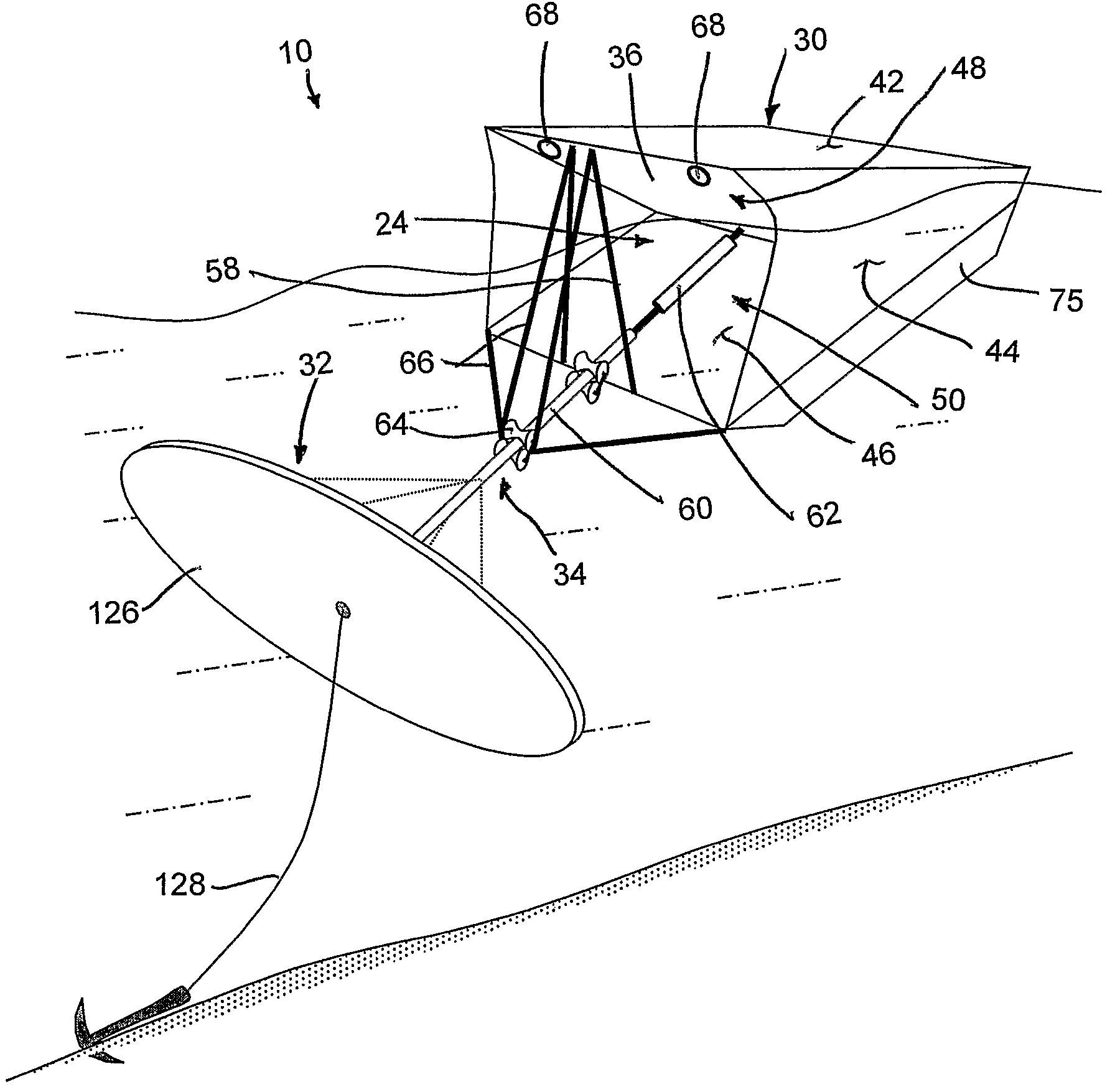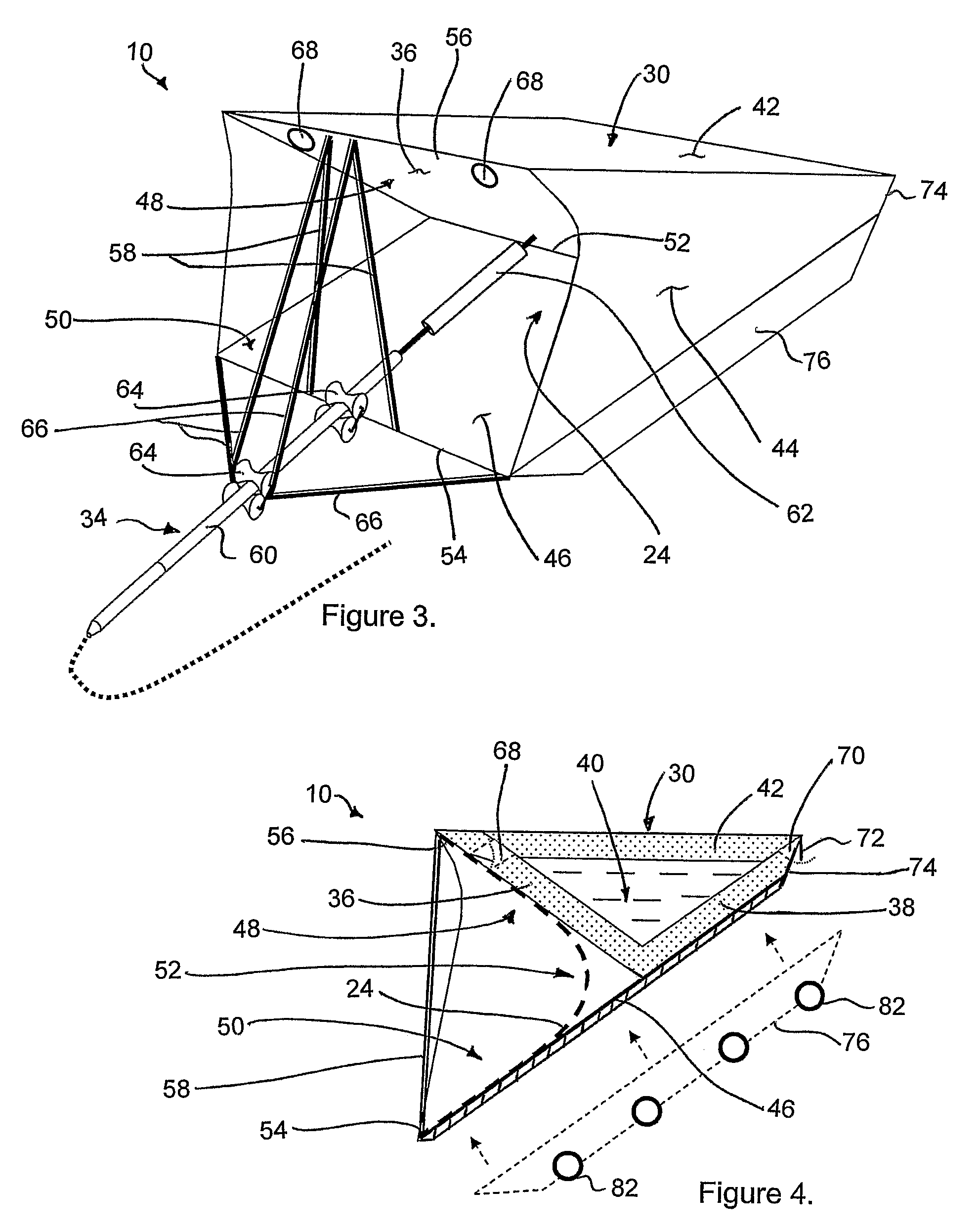Wave energy device
a wave energy and device technology, applied in the direction of sea energy generation, buoyancy control, electrical equipment, etc., can solve the problems of reducing the conversion efficiency, the engineering challenges necessary to enable the equipment to survive in that environment have so far proved insurmountable, and the realization of a cost-effective wave energy conversion technology. achieve the effect of increasing the buoyancy of the buoyant body
- Summary
- Abstract
- Description
- Claims
- Application Information
AI Technical Summary
Benefits of technology
Problems solved by technology
Method used
Image
Examples
Embodiment Construction
[0083]Referring to the accompanying figures there is illustrated a wave energy device generally indicated by reference numeral 10. The device 10 is particularly suited for capturing wave energy from waves propagating in a wave direction 12. The device 10 is arranged to convert the wave energy into a usable form of energy, for example electrical power or a flow of pressurized water which can be later used either at the wave energy device or at a remote location for desalinating seawater or for driving an electrical turbine generator.
[0084]With initial reference to FIGS. 1 and 2, waves propagating in the wave direction 12 typically are comprised of water following generally orbital motions 14 advancing generally in a shoreward direction of wave propagation. As the water goes through orbital motions 14 the water forms a wave having a wavelength L between the crests of adjacent waves and a height H between each crest and the adjacent trough.
[0085]At the crest of each wave, at an upper p...
PUM
 Login to View More
Login to View More Abstract
Description
Claims
Application Information
 Login to View More
Login to View More - R&D
- Intellectual Property
- Life Sciences
- Materials
- Tech Scout
- Unparalleled Data Quality
- Higher Quality Content
- 60% Fewer Hallucinations
Browse by: Latest US Patents, China's latest patents, Technical Efficacy Thesaurus, Application Domain, Technology Topic, Popular Technical Reports.
© 2025 PatSnap. All rights reserved.Legal|Privacy policy|Modern Slavery Act Transparency Statement|Sitemap|About US| Contact US: help@patsnap.com



